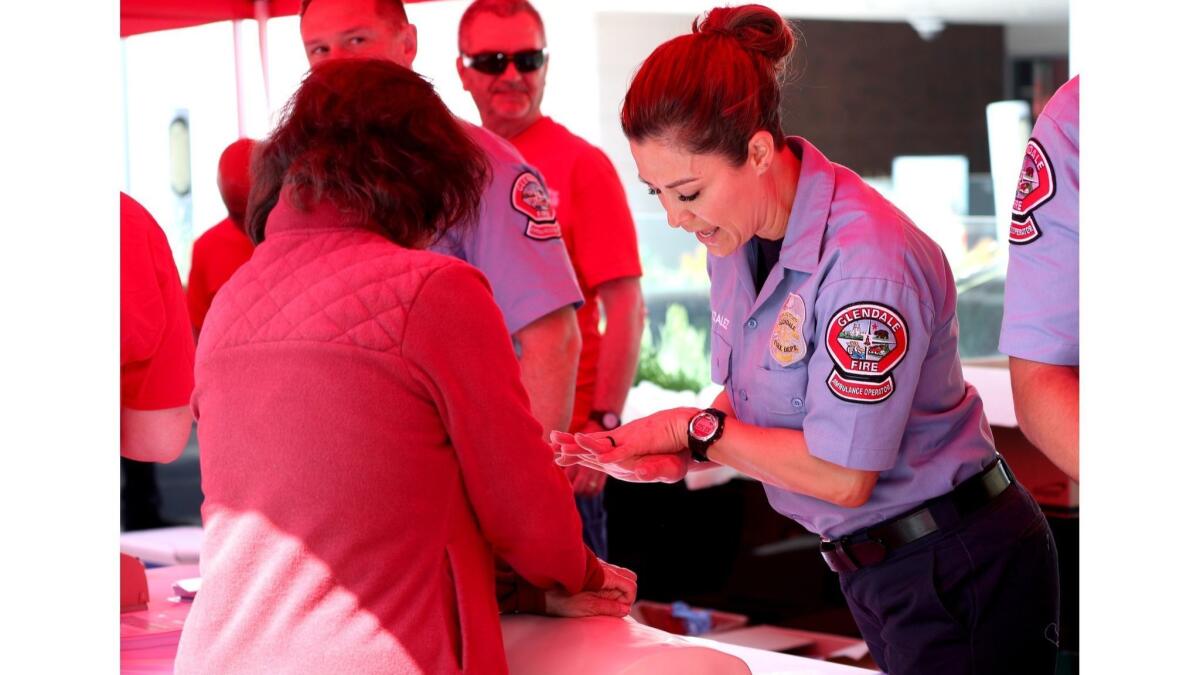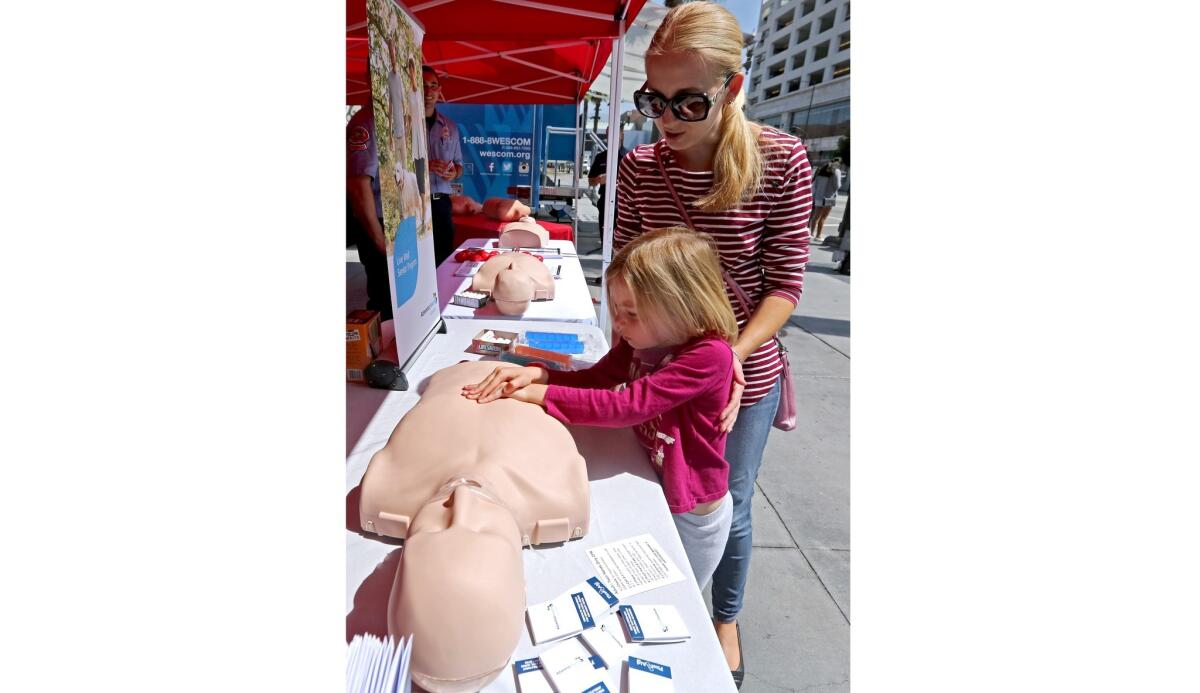Glendale residents get lifesaving lessons during sidewalk CPR event

It takes only 90 seconds for someone to learn how to potentially save another person’s life.
Those were the instructions members of the Glendale Fire Department and employees from Adventist Health Glendale provided on Thursday when they taught passersby in front of the Glendale Galleria how to perform hands-only CPR. A person administering it only performs chest compressions rather than doing it in conjunction with rescue breaths as in normal CPR.
Luis Mangarrez, the fire department’s ambulance operator coordinator, said learning how to perform this variant of CPR takes only 90 seconds of a person’s day. The quick classes were part of a national awareness campaign sponsored by the American Heart Assn. and the American Red Cross that encourages people in the United States to learn CPR.
Nationally, about 400,000 people suffer sudden cardiac arrests a year, according to the American Heart Assn. In Los Angeles County, more than 5,000 people suffer sudden cardiac arrests annually.
As with rendering other forms of first-aid, the procedure involves checking to see if someone, in this case a person suffering from sudden cardiac arrest, is responsive, calling 911 and performing chest compressions.
“We’re telling people to push hard and fast until [emergency medical personnel] arrives,” Mangarrez said.

He added that the person having CPR performed on them should be on a hard surface to ensure the compressions are effective. Compressions should push down a person’s chest by at least 2 inches and should be performed at a pace of around 100 to 120 beats per minute.
Mangarrez also said certain songs can help people keep the proper rhythm when performing CPR like “Staying Alive” by the Bee Gees or even “Baby Shark,” a viral children’s song known for its repetitive “doo doo doo doo doo doo.”
He said a person’s chances of surviving a sudden cardiac arrest triples if CPR is performed on them immediately.
Shay Boone was out with her 5-year-old daughter, Lila, on their way to the mall when they stopped by to take part in a class.
“It’s a great service to the community. The more people know CPR the better,” Boone said.
